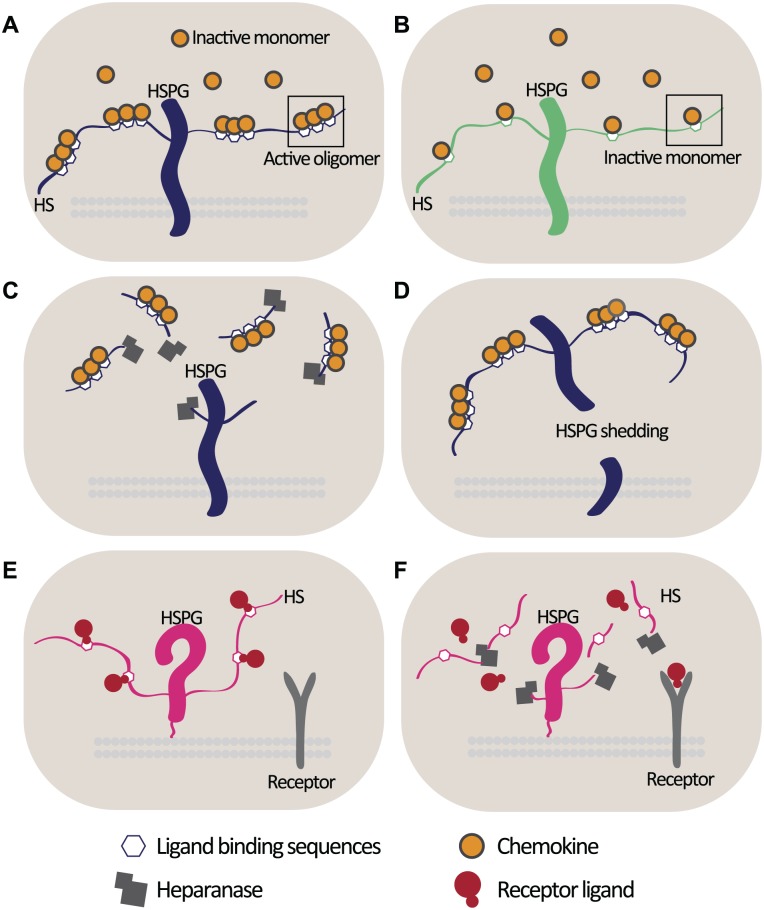Figure 2.
Cell-specific HS chain effects during inflammation. (A) The spatial distribution of ligand-binding sites along the HS chain will determine the oligomerization and thus activation state of certain chemokines.12 (B) Sparse distribution of chemokine-binding sites on an HS chain may result in sequestration of inactive chemokine monomers, accompanied by an attenuated inflammatory response. (C) Heparanase release of HS-bound chemokines (or other inflammatory effector ligands) may facilitate the attenuation of the inflammatory response in an immune cell; however, heparanase release of HS-activated chemokine oligomers from non-immune cells may increase the soluble pool of activated chemokines capable of paracrine activation of immune cells. (D) HSPG shedding releases chemokines from the cell surface and suppresses immune cell activation.15 The dynamics of HSPG shedding may differ between different cell types, and as in C, the outcome of releasing HS-bound inflammatory ligands from the cell surface will differ depending on cell type. (E) HS may bind and compete with receptors for ligand-binding sites, as demonstrated for IFNγ and its receptor,44 thus preventing receptor activation. (F) Heparanase degradation of HS may permit the dissociation of a ligand from its inhibitory interaction with HS, allowing it to stimulate signaling of its receptor. Abbreviations: HS, heparan sulfate; HSPGs, heparan sulfate proteoglycans; IFNγ, interferon γ.

